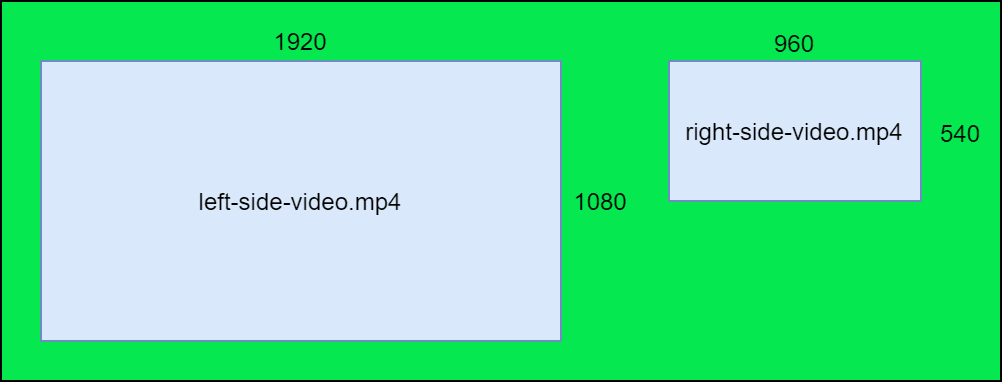

#FFMPEG MAP FIRST VIDEO AND AUDIO WINDOWS#
Open command promt ( windows + R -> Cmd + Enter ). It takes more time and may lose a little video quality, but it is more compatible and portable.įfmpeg -i input.mp4 -map_metadata 0 -vf "transpose=1" output. The -map option makes ffmpeg only use the first video stream from the first input and the first audio stream from the second input for the output file. In this case, you need to re-encode the video. With -c copy the streams will be stream copied, not re-encoded, so there will be no quality loss. Click the Audio tab to open the file adding window. However, a few video players don't support meta data rotation. map 0:v:0 can be translated as: from the first input (0), select video stream type (v), first video stream (0)-map 1:a:0 can be translated as: from the second input (1), select audio stream type (a), first audio stream (0) Additional Notes. Step 1 Launch Wondershare UniConverter and Import video files to fix audio out of sync From the main interface of Wondershre UniConverter, click Video Editor Tab, you will find 6 editing features list here: Trim/Crop/Watermark/Effect/Subtitle/Audio. If you want both audio tracks to play (' mux them together so they both play '), then mix the audio into one track. By default, the best or first supported audio will play. It is fast, taking less than a second on SSD.įfmpeg -i input.mp4 -map_metadata 0 -metadata:s:v rotate="90" -codec copy output.mp4 If stream mapping is showing both audio tracks are present in the output file, then you should be able to select which track to play in the video player. The recommended way is to set rotation meta data. To watch the video in correct direction, you can rotate it with ffmpeg. At its core is the FFmpeg program itself, designed for command-line-based processing of video and audio files. Some cameras, lacking G sensors, cannot automatically rotate captured video. -map 1:a:0: use #1 (second) file's #0 (first) audio track.-map 0:v:0: use #0 (first) file's #0 (first) video track.That is why it's important to specify -shortest to limit the output. The -f lavfi -i anullsrc generates a virtual audio source with silence with infinite length. ffmpeg \ -i video1.mp4 -f lavfi -i anullsrc \ -c:v copy \ -shortest \ -map 0:v -map 1:a \ -y output.mp4. -c:v copy: copy video, without re-encoding In this cases, the solution is to replace the audio track with a silent audio.-c copy: copy both audio and video, without re-encoding.If the video already has audio but you want to replace it:įfmpeg -i video.mp4 -i audio.mp3 -c:v copy -c:a aac -map 0:v:0 -map 1:a:0 output.mp4 They are plain text files that can be used by both audio and video players to. If you have a video file without sound and an audio file, and you don't want to re-encode anything:įfmpeg -i video.mp4 -i audio.mp3 -c copy output.mp4įfmpeg -i video.mp4 -i audio.mp3 -c:v copy -c:a aac output.mp4 iTunes, for example, will only render the first entry in an M3U file.
#FFMPEG MAP FIRST VIDEO AND AUDIO INSTALL#
Installation sudo zypper install ffmpeg-4


 0 kommentar(er)
0 kommentar(er)
